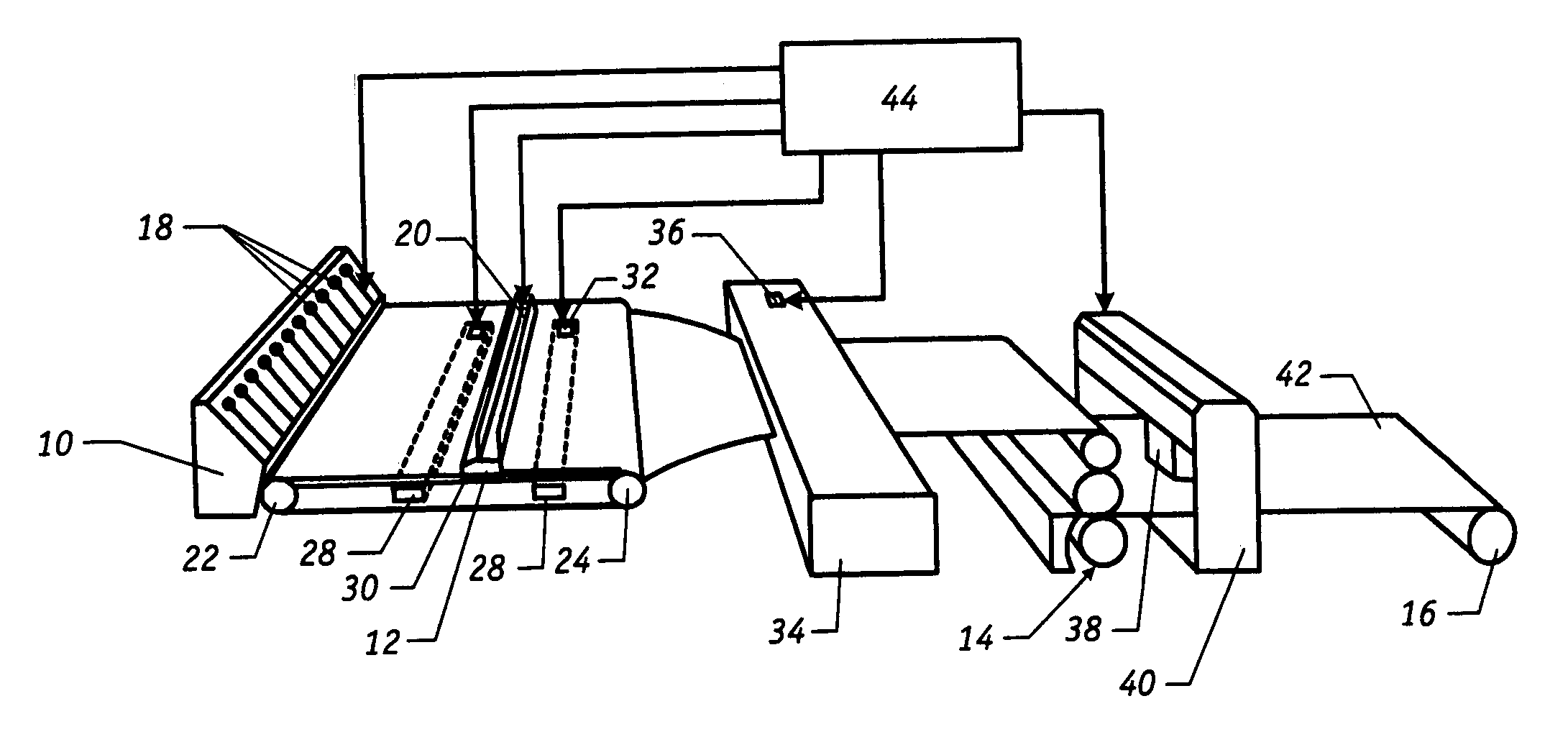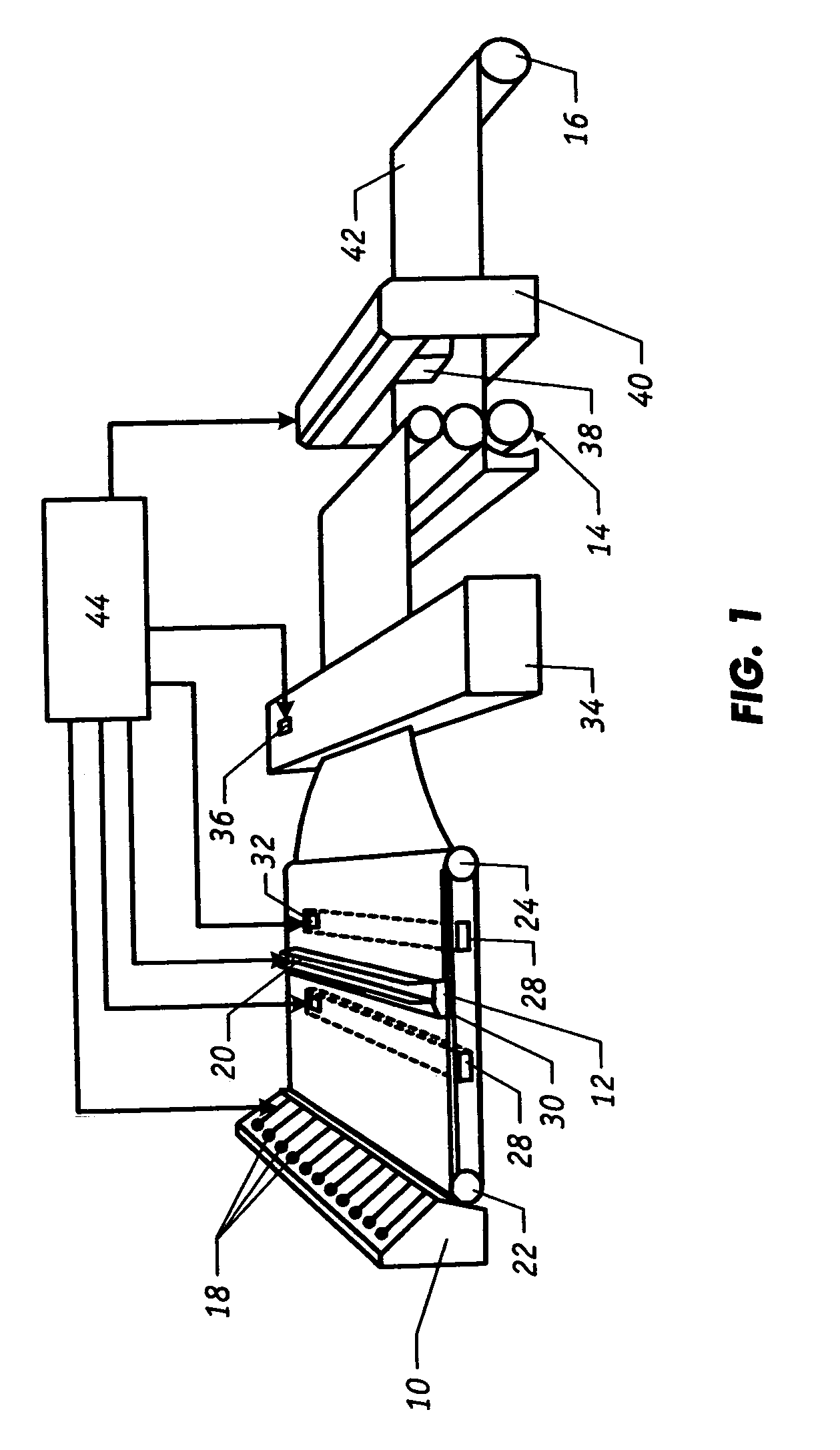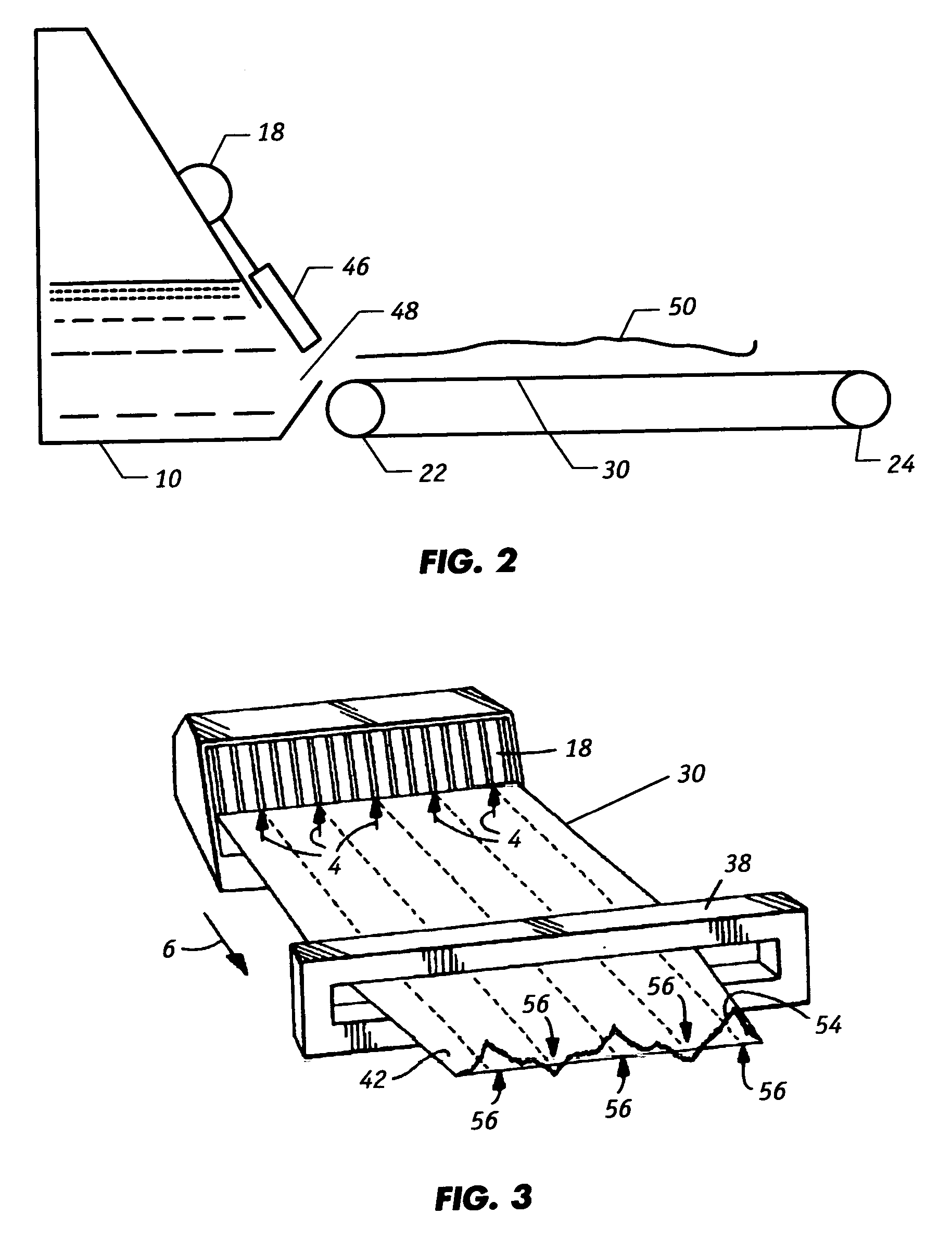Reverse bump test for closed-loop identification of CD controller alignment
a technology of closed loop identification and cd controller, which is applied in the direction of drying machines, lighting and heating apparatus, instruments, etc., can solve the problems of non-uniform cd profiles, non-uniform pulp stock distribution, and common cases
- Summary
- Abstract
- Description
- Claims
- Application Information
AI Technical Summary
Benefits of technology
Problems solved by technology
Method used
Image
Examples
Embodiment Construction
[0045] As shown in FIG. 1, a system for producing continuous sheet material includes various processing stages such as headbox 10, steambox 12, a calendaring stack 14 and reel 16. The array of actuators 18 in headbox 10 controls the discharge of wet stock (or feedstock) material through a plurality of slices onto supporting web or wire 30 which rotates between rollers 22 and 24. Similarly, actuators 20 on steambox 12 can control the amount of steam that is injected at points across the moving sheet. Sheet material exiting the wire 30 passes through a dryer 34 which includes actuators 36 that can vary the cross directional temperature of the dryer. A scanning sensor 38, which is supported on supporting frame 40, continuously traverses and measures properties of the finished sheet in the cross direction. Scanning sensors are known in the art and are described, for example, in U.S. Pat. No. 5,094,535 to Dalquist, U.S. Pat. No. 4,879,471 to Dalquist, et al, U.S. Pat. No. 5,315,124 to Go...
PUM
 Login to View More
Login to View More Abstract
Description
Claims
Application Information
 Login to View More
Login to View More - R&D
- Intellectual Property
- Life Sciences
- Materials
- Tech Scout
- Unparalleled Data Quality
- Higher Quality Content
- 60% Fewer Hallucinations
Browse by: Latest US Patents, China's latest patents, Technical Efficacy Thesaurus, Application Domain, Technology Topic, Popular Technical Reports.
© 2025 PatSnap. All rights reserved.Legal|Privacy policy|Modern Slavery Act Transparency Statement|Sitemap|About US| Contact US: help@patsnap.com



